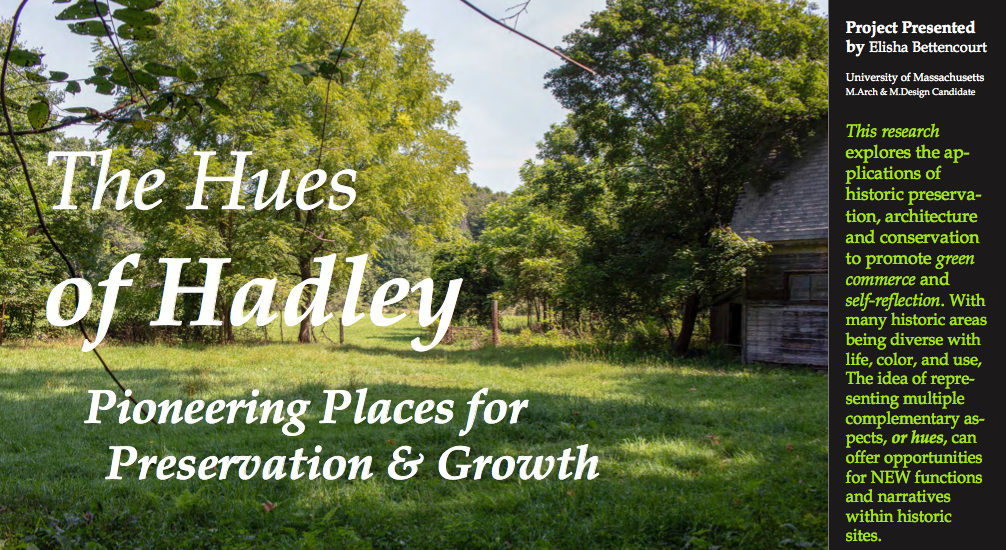“The Hues of Hadley: Pioneering Places for Preservation and Growth”
by Elisha Bettencourt
The Porter-Phelps Huntington Museum presents The Hues of Hadley: Pioneering Places for Preservation and Growth. This exhibit showcases University of Massachusetts graduate student Elisha Bettencourt's thesis on Phelps Farm. Charles (Moses) Porter Phelps, grandson of Moses Porter, built Phelps Farm in 1816 just across the street from the home he grew up in, now the Porter-Phelps-Huntington Museum. As envisioned by Bettencourt, Phelps Farm would showcase Hadley’s history through both people and the environment.
The Phelps Farmhouse built in 1816, is a beautiful example of the Federal Style, and holds several distinctive and elegant details specified by its original owner Charles (Moses) Porter Phelps. Charles built the house for his wife Sarah shortly before her passing, and moved back to Hadley from Boston to live on the farm with their surviving children. Although always utilized as a private residence, the farmhouse and property now have the opportunity to combine into a new type of historic and environmental resource.
Elisha Bettencourt is a dual major in Architecture and Historic Preservation at the University of Massachusetts Amherst, and has been continually inspired by the Connecticut River Valley and its architecture. Her research explores cross-disciplinary approaches to design, preservation, green practices, and education with an eye towards harboring more environmental mindfulness and self-reflection within historic areas. This exhibit strives to discuss sustainable practices both old and new, and works on developing a multipurpose reuse project for a variety of audiences. This project also hinges on the idea that historic resources are endangered species themselves, and those built in natural settings have a unique role to invite new conversations about sustainable mindsets and preserving the future.
To see the exhibit, please click on the image below.
